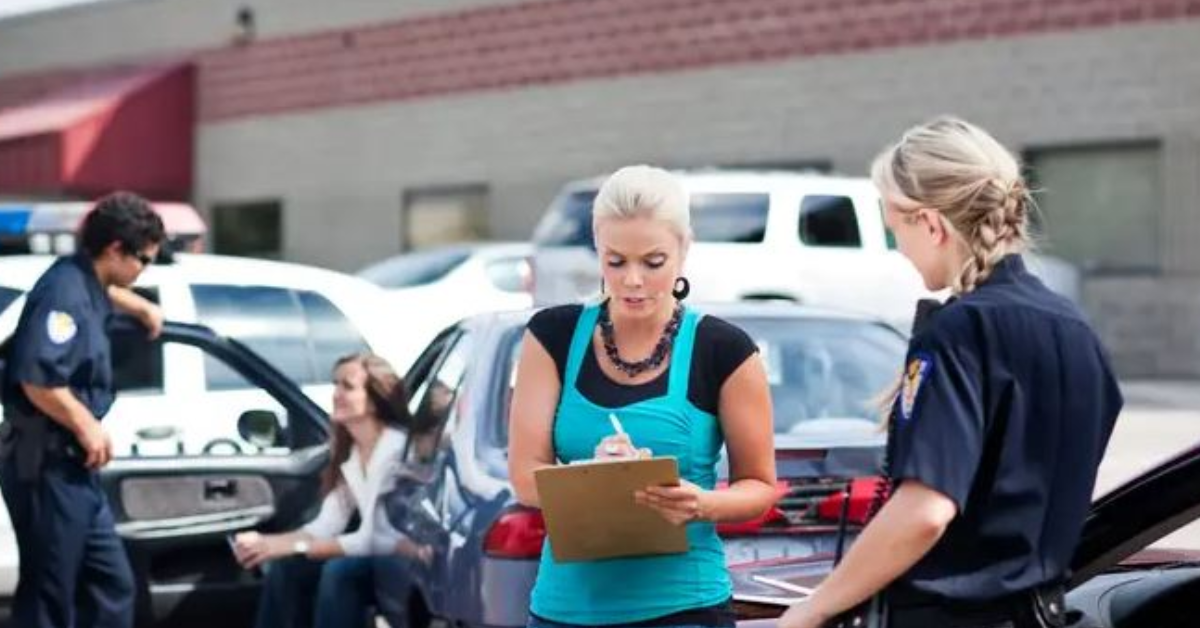
Accidents can result in thousands of dollars in medical bills and repairs. Fortunately, insurance is available so you can recoup the costs. If you’re hurt or your car is damaged in an accident that’s someone else’s fault, you can often file a claim with that person’s insurance company.
While getting someone’s insurance information at the scene is ideal, it may not always be possible. If you’re involved in a hit-and-run, or the at-fault party refuses to cooperate, there are ways you can protect yourself.
How to get someone’s car insurance information
While frustrating, there are some actions you can take if someone you’re involved in an accident with is uncooperative. You can request help from the police, contact the DMV, or work with your provider to find out who the at-fault party’s insurer is, says Anastasia Allmon, a personal injury attorney at Farris, Riley and Pitt.
Get the police involved
Requesting help from the police should be your first move if you were involved in a two-party accident.
The officers at the scene will usually create a report including details of the incident such as the date, time, weather conditions, vehicle damage, and who’s at fault. You’ll need to obtain that police report number to file a claim, says Allmon.
If you’ve been involved in a hit-and-run and got the vehicle’s license plate number, give it to the police. If you didn’t get a license plate number, try to remember as much as you can about the other vehicle such as its color, make, and model, and provide them as many details as possible, says Allmon.
Obtain insurance information from the DMV
Suppose the at-fault party refuses to exchange car insurance information. In that case, you can also visit your local DMV to find the at-fault driver’s insurance information. You must provide the DMV with the reason for your request and the at-fault party driver’s license, according to Insurantly, an auto-insurance quote comparison company.
After finding out who their insurer is, contact the provider and report the details of the incident.
Report the accident to your insurer
Hit-and-run drivers often flee because they don’t have insurance. Many states require drivers to carry a minimum amount of liability insurance.
If you were in an accident and the other driver fled the scene or doesn’t have insurance, report it to your insurance company. You may get reimbursed for the damage through your insurance company if you have collision coverage, or your insurance company can help you find the at-fault party’s insurance information.
“Even if you don’t end up making a claim, you need to update your insurance provider as soon as possible, otherwise you could risk invalidating your policy,” says Allmon.
Here are the steps to take to file a claim against someone else’s auto insurance:
Step 1: Gather as much information as possible
Gathering as much information about the incident is crucial. Doing so will expedite the process and ensure you get a fair settlement.
If you’re involved in a car accident, here is some information you should gather at the scene, according to Allstate:
- Location, date, and time of the accident
- Name, address, phone number, and insurance policy number for all involved in the accident
- Weather conditions
- Photos of damage
- Copies of police and accident reports, if applicable
Step 2: Contact your insurance company
If you file a car insurance claim, report the accident to your insurance company promptly to avoid delays in your claim. From there, your provider will work with the at-fault party’s insurance to obtain reimbursement for your loss.
Step 3: Prepare to meet an adjuster
Once you’ve filed the claim, the at-fault party’s insurance company will typically send an adjuster to inspect the damage. Prepare for the visit by creating a list of the damaged items.
Be sure to have any pertinent information on hand, such as details of the accident, the contact information of anyone involved, and any photos or videos related to the incident.
When you should and shouldn’t file a third-party claim
In some cases, you may not be able to file a claim against someone else’s insurance, even if you’re not at fault. You might decide to have the problem fixed yourself if you find that the process is taking too long.
No-fault states
“No-fault” states require drivers to have personal injury protection (PIP). No-fault insurance covers accident-related medical bills at a specific limit, regardless of who is at fault.
In this case, you will not be able to file a claim against another person’s insurance for your medical expenses because you are required to have your own coverage. Personal injury protection will cover you and your passengers’ medical expenses, regardless if you have health insurance. You can usually pair your PIP coverage with medical payment coverage, or MedPay, for more protection.
Uninsured/underinsured motorist
An underinsured or uninsured motorist is someone who has little to no liability insurance.
In most states, drivers must carry a minimum amount of liability car insurance. However, you can’t file a claim with the at-fault party’s insurance company if they don’t have coverage. If you have uninsured/underinsured motorist coverage, you can file a claim on your own insurance to get reimbursed.
Otherwise, you must pay out of pocket for repairs or sue the at-fault party, which could be a long and costly process.
Using your own coverage
If another car hits you, your collision coverage is an option to pay for the damage. Collision coverage is not required by law. However, it can be helpful if an underinsured or uninsured driver hits your car. Additionally, filing a claim with collision coverage could expedite the process.
To read the full article, click here.